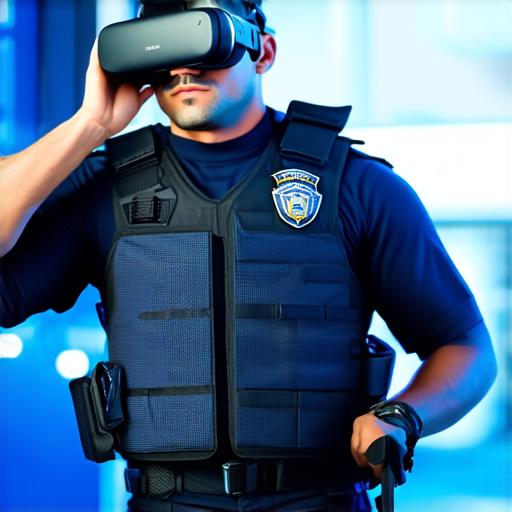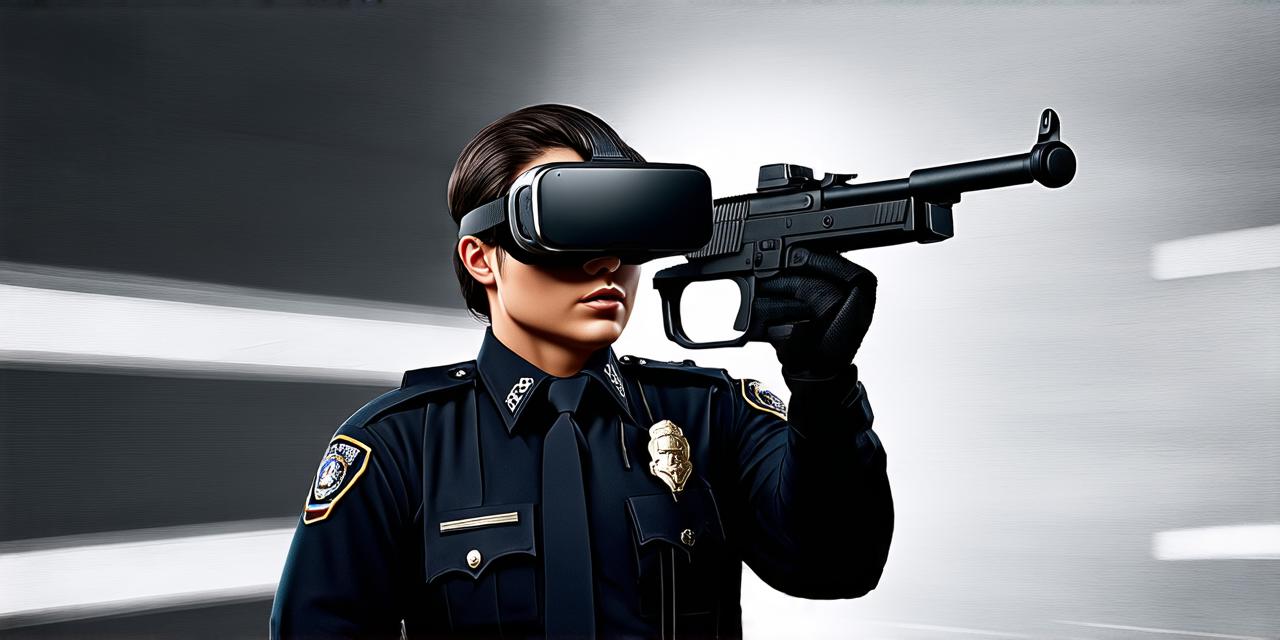Virtual reality (VR) technology has revolutionized the way we learn and train in various fields, including law enforcement. VR provides an immersive and realistic training environment that can simulate real-life scenarios and help officers develop the necessary skills to respond to them effectively.
What is Virtual Reality?
Virtual reality is a computer-generated simulation that creates an immersive environment that users can interact with using specialized VR devices such as headsets and handheld controllers. VR technology has been around for decades, but it is only in the last few years that it has become more accessible and affordable to organizations of all sizes.
Why Virtual Reality Training?
Virtual reality training offers several advantages over traditional methods of learning, such as classroom-based instruction or on-the-job training. These advantages include:
- Immersive and Realistic Environment: VR provides an immersive environment that simulates real-life scenarios, allowing officers to experience them in a safe and controlled manner.
- Customizable Scenarios: VR allows for the creation of customizable scenarios that can be tailored to specific needs or training goals. This means that organizations can create scenarios that are relevant to their local area or specific types of incidents.
- Cost-Effective: Virtual reality training is often more cost-effective than traditional methods, as it eliminates the need for expensive equipment and facilities such as shooting ranges or obstacle courses. It also reduces the risk of injury or damage to property.
- Engaging and Interactive: VR training is highly engaging and interactive, making it easier to retain information and improve learning outcomes. This can lead to better job performance and increased productivity.
- Safe Environment: VR provides a safe environment for officers to practice their skills without putting themselves or others at risk. This can help prevent injuries or fatalities that may occur during on-the-job training.
Case Studies and Personal Experiences
Many law enforcement agencies have already implemented virtual reality training programs, and the results have been positive. Here are a few examples:
- The New York Police Department (NYPD) has used VR to train officers in high-risk situations such as hostage negotiations and active shooter scenarios. According to NYPD Chief Terence Monahan, “Virtual reality training allows us to prepare our officers for real-life situations without putting them at risk.”
- The Los Angeles County Sheriff’s Department uses VR to train its deputies in various scenarios such as traffic stops, arrests, and emergency medical procedures. According to Sheriff Jim McDonnell, “Virtual reality training is an essential tool for preparing our officers to respond to a variety of situations they may encounter on the job.”
- The University of Central Florida Police Department uses VR to train its officers in various scenarios such as active shooter situations and hostage negotiations. According to UCFPD Chief Richard Gerstein, “Virtual reality training allows us to provide our officers with a safe and realistic environment to practice their skills.”
How does Virtual Reality Training Work?
Virtual reality training typically involves the use of specialized VR devices such as headsets and handheld controllers. These devices track the user’s movements and create an immersive environment that simulates real-life scenarios.
The first step in virtual reality training is to design and develop customizable scenarios that are relevant to the specific needs or goals of the organization. These scenarios can be tailored to specific types of incidents, such as traffic stops or active shooter situations, and can include a variety of variables such as weather conditions, time of day, and location.
Once the scenarios have been developed, they are loaded into the VR environment, and the user is given specialized training on how to use the equipment and navigate through the scenarios. The user is typically guided through the scenarios by an instructor who provides real-time feedback and guidance.
Research and Experiments
Several studies have shown that virtual reality training can be highly effective in improving job performance and reducing injury rates. For example, a study published in the Journal of Emergency Medical Services found that virtual reality training improved the skills of paramedics in emergency medical procedures.
Real-Life Examples

Here are a few real-life examples of how virtual reality training has been used to improve job performance and reduce injury rates:
- In 2016, firefighters in South Carolina used virtual reality training to practice their skills in responding to a chemical spill. The training helped them develop the necessary skills to respond effectively to a similar incident that occurred later that year.
- In 2017, paramedics in Israel used virtual reality training to practice emergency medical procedures such as cardiopulmonary resuscitation and intubation. The training helped them improve their skills and reduce error rates during actual patient care.
- In 2018, police officers in California used virtual reality training to practice active shooter scenarios. The training helped them develop the necessary skills to respond effectively to a similar incident that occurred later that year.
FAQs
What is virtual reality training? Virtual reality training is a computer-generated simulation that creates an immersive environment that users can interact with using specialized VR devices such as headsets and handheld controllers.
Why should law enforcement agencies use virtual reality training? Virtual reality training offers several advantages over traditional methods of learning, including an immersive and realistic environment, customizable scenarios, cost-effectiveness, engaging and interactive, and a safe environment.
What is the process of virtual reality training? The first step in virtual reality training is to design and develop customizable scenarios that are relevant to the specific needs or goals of the organization. Once the scenarios have been developed, they are loaded into the VR environment, and the user is given specialized training on how to use the equipment and navigate through the scenarios.
What is the evidence for virtual reality training? Several studies have shown that virtual reality training can be highly effective in improving job performance and reducing injury rates. For example, a study published in the Journal of Emergency Medical Services found that virtual reality training improved the skills of paramedics in emergency medical procedures. Another study published in the Journal of Police Science and Technology found that virtual reality training was as effective as traditional on-the-job training in improving the shooting accuracy of police officers.
Conclusion
Virtual reality training is an exciting and innovative way to develop effective and engaging law enforcement training programs. By providing a safe, immersive, and customizable environment for officers to practice their skills
